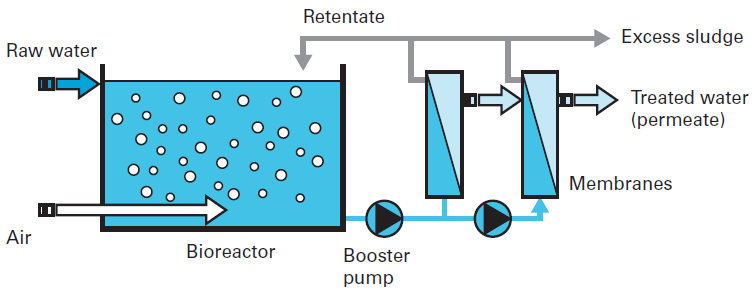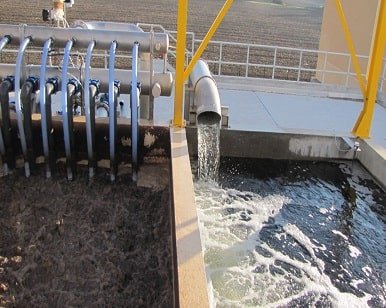The Science Behind Membrane Bioreactor: How It Works and Why It’s Effective
Membrane Bioreactors Clarified: Reliable Solutions for Clean Water
Membrane bioreactors (MBRs) have become an advanced service for dealing with the pressing difficulties of wastewater therapy. By integrating organic processes with innovative membrane purification, MBRs not only improve the quality of cured water however additionally reduce the spatial demands of therapy centers. As ecological concerns escalate, the role of MBR technology in promoting lasting water monitoring comes to be progressively considerable. Nevertheless, the complexities of their operation, advantages, and potential applications warrant a closer exam to completely understand their effect on the future of water therapy.

What Are Membrane Layer Bioreactors?
Membrane bioreactors (MBRs) are sophisticated wastewater therapy systems that combine biological deterioration procedures with membrane filtering innovation. This assimilation permits the efficient elimination of pollutants from water, making MBRs a favored option in various applications, consisting of local wastewater treatment and industrial effluent monitoring.

Among the essential benefits of MBRs is their capacity to generate high-quality effluent, commonly ideal for reuse in irrigation or commercial processes. In addition, MBRs call for a smaller impact compared to traditional therapy systems, making them perfect for metropolitan setups where area might be restricted.
Furthermore, MBRs can efficiently manage differing influent tons and are less vulnerable to the impacts of poisonous shocks. These characteristics add to their growing popularity as a sustainable solution for attending to the enhancing need for tidy water while lessening environmental influences.
Just How Membrane Layer Bioreactors Work
While the operation of membrane layer bioreactors (MBRs) may seem facility, it fundamentally focuses on the synergy in between organic procedures and membrane filtering. MBRs integrate a biological therapy process, generally activated sludge, with a membrane separation device to treat wastewater effectively.
In an MBR system, wastewater is very first introduced into a bioreactor where microbes deteriorate raw material and various other impurities. The biological task lowers the concentration of pollutants while promoting the growth of biomass. Following this organic therapy, the blended alcohol goes through membrane filtering, which can be microfiltration or ultrafiltration, depending on the desired effluent quality.
The membrane layers serve as a physical obstacle, enabling water and tiny solutes to pass while preserving suspended solids and larger particles. This enables the system to maintain a high concentration of biomass within the activator, boosting the therapy performance.
In addition, the continual splitting up of cured water from the biomass promotes a compact style and decreases the footprint of the treatment facility. On the whole, the mix of biological destruction and membrane purification in MBRs leads to trusted and efficient wastewater therapy, ensuring premium effluent suitable for numerous applications.
Benefits of MBR Innovation
One of the vital advantages of membrane layer bioreactor (MBR) modern technology is its capacity to produce top notch effluent with a substantially decreased impact compared to standard wastewater treatment techniques. MBR systems efficiently combine organic therapy and membrane layer purification, resulting in superior elimination of impurities, consisting of put on hold solids, microorganisms, and organic issue. This ability causes effluent that typically fulfills or surpasses stringent regulatory requirements for reuse and discharge.
Furthermore, MBR modern technology allows for greater biomass focus, which improves the therapy efficiency and lowers the needed reactor quantity. This portable design is especially useful next in urban locations where area is restricted. The functional versatility of MBR systems likewise indicates they can adjust to differing influent high qualities and circulation prices, making them suitable for a wide variety of applications.
Additionally, the lowered sludge production connected with MBR processes adds to reduce operational and upkeep costs. The membranes serve as a physical obstacle, reducing the danger of obstructing and enabling longer operational periods between cleansing. On the whole, the benefits of MBR innovation make it an attractive option for lasting wastewater treatment, dealing with both environmental problems and the requirement for reliable resource administration.
Applications of Membrane Layer Bioreactors
With their flexibility and effectiveness, membrane layer bioreactors (MBRs) discover applications across various fields, consisting of community wastewater treatment, industrial procedures, and also water reclamation. In community settings, MBRs offer a compact option for dealing with wastewater, properly getting rid of impurities while simultaneously producing premium effluent that satisfies rigid governing standards. This makes them specifically ideal for locations with restricted room.
In commercial applications, MBR innovation is used for treating process water, particularly in industries such as food and drink, drugs, and petrochemicals. These markets profit from MBRs' ability to handle high natural tons and their efficiency in recuperating valuable sources from wastewater, such as nutrients and water.
In addition, MBRs play a crucial role in water recovery efforts, enabling the reuse of dealt with wastewater for watering, industrial procedures, or also as drinkable water after additional treatment (Membrane Bioreactor). Their performance in eliminating virus and pollutants makes them a trustworthy selection for ensuring water top quality in different reuse applications
Future of Water Therapy Solutions
The future of water treatment options is positioned for transformative advancements driven by technical advancement and enhancing ecological understanding. As international water shortage comes to be a pushing concern, new techniques, including membrane layer bioreactor (MBR) systems, are readied to play a crucial role in boosting the performance and sustainability of water treatment procedures.
Emerging innovations such as expert system and device learning are expected to maximize treatment procedures, permitting for real-time monitoring and predictive upkeep. This will enhance the total reliability and efficiency of water treatment facilities. Advancements in membrane navigate to these guys layer materials, such as graphene and nanofiltration, promise to enhance permeation rates and lower fouling, leading to reduced energy intake and operational expenses.
In addition, the assimilation of renewable energy resources into water treatment plants will certainly add to greener techniques. The round economy model will certainly likewise acquire traction, motivating the healing of important resources from wastewater, such as nutrients and energy.
Conclusion

Membrane layer bioreactors (MBRs) have arised as an innovative solution for resolving the pressing obstacles of wastewater click here to read treatment. By integrating biological processes with advanced membrane layer filtration, MBRs not only boost the high quality of cured water however additionally decrease the spatial needs of treatment centers.One of the key benefits of membrane layer bioreactor (MBR) innovation is its capacity to produce top notch effluent with a considerably lowered footprint contrasted to standard wastewater treatment techniques.With their flexibility and effectiveness, membrane layer bioreactors (MBRs) find applications across numerous sectors, including metropolitan wastewater treatment, industrial processes, and also water recovery.In conclusion, membrane bioreactors represent a substantial advancement in wastewater treatment innovation, incorporating organic procedures with reliable membrane filtration to produce top notch effluent.